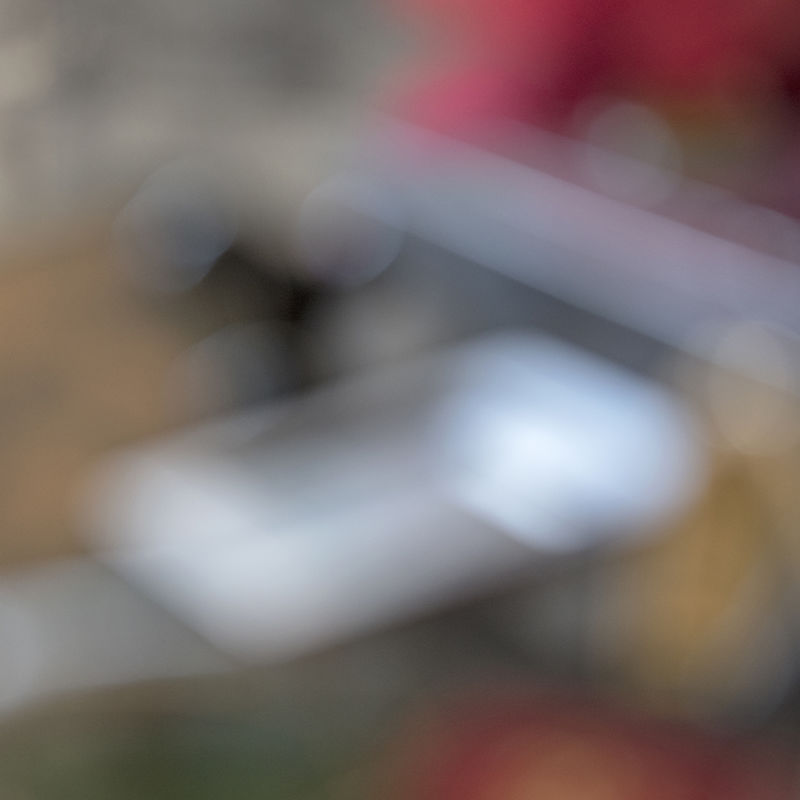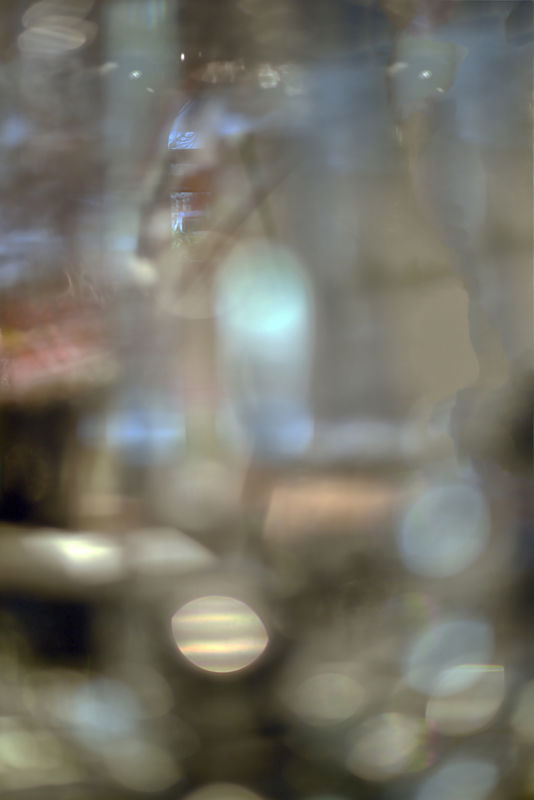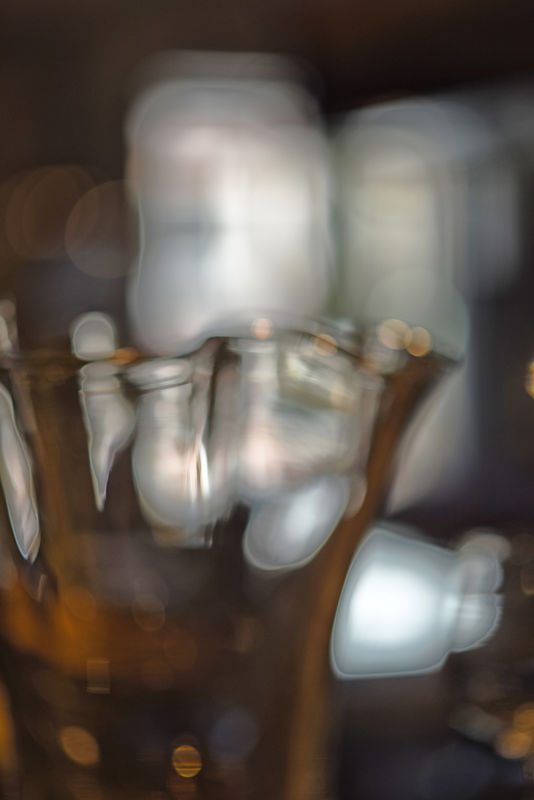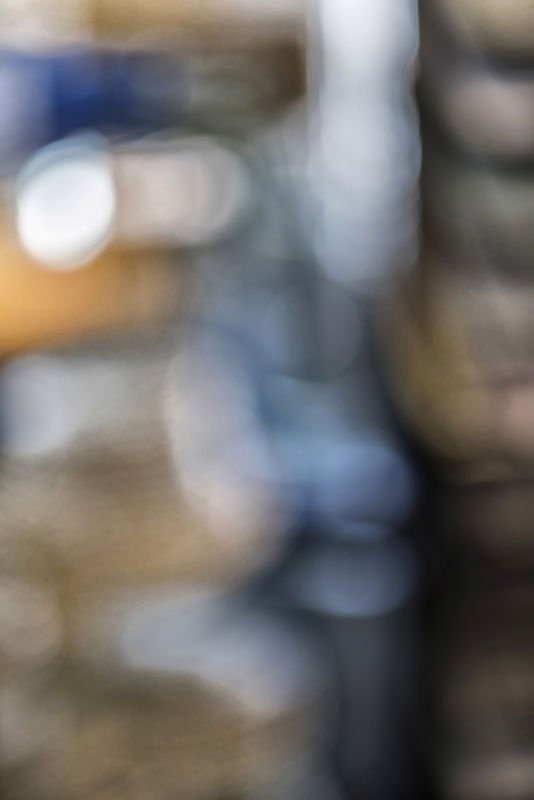Open Discussion Part A
Oct 18, 2021 21:17:28 #
I'm hoping my FYC friends get a conversation going about the process for photographing the images in this composite.
Part B will be posted in the next day or two explaining all the layers making up this final image hoping for open discussion. Hope this is something that sparks interest engaging with additional comments.
To start I saw an article about shooting something like this making a bokeh background by shooting through a tree. He said to use wide aperture setting then same aperture for the main subject. He didn't explain the logic but I tried the best I could for the shots.
The picture is made up of 3 photos. First photo was the background with the obvious bokeh look. I photographed my live oak tree with the morning sun shining through. I used a 50 mm lens with aperture set at f/1.4. Shot about 4 shots and saw I wasn't achieving the bokeh I desired. Then thought to intentionally take the picture out of focus. I could see what was happening as I looked through the view finder. That got the look I wanted.
For the flower I wanted to use the same 50 mm f/1.4 but didn't like the position I had to get into for the shot. (Legs just aren't what they use to be.) I changed to my 100 mm and shot f/2.8. I had a difficult time holding the camera steady keeping the flower in focus. I was moving forward and back and just couldn't get it right. Decided to try putting the camera in continues shooting mode, something should be in focus this worked.
The flower stem was from a rose photo I shot previously. The floating petal are segments from the base flower.
Please think of this post as a friendly conversation discussing photography over a cup of coffee and open to all sorts of comments, can be about the process, camera, lenses set up or anything else that is of interest to you.
Watch for part B in a day or two.
Part B will be posted in the next day or two explaining all the layers making up this final image hoping for open discussion. Hope this is something that sparks interest engaging with additional comments.
To start I saw an article about shooting something like this making a bokeh background by shooting through a tree. He said to use wide aperture setting then same aperture for the main subject. He didn't explain the logic but I tried the best I could for the shots.
The picture is made up of 3 photos. First photo was the background with the obvious bokeh look. I photographed my live oak tree with the morning sun shining through. I used a 50 mm lens with aperture set at f/1.4. Shot about 4 shots and saw I wasn't achieving the bokeh I desired. Then thought to intentionally take the picture out of focus. I could see what was happening as I looked through the view finder. That got the look I wanted.
For the flower I wanted to use the same 50 mm f/1.4 but didn't like the position I had to get into for the shot. (Legs just aren't what they use to be.) I changed to my 100 mm and shot f/2.8. I had a difficult time holding the camera steady keeping the flower in focus. I was moving forward and back and just couldn't get it right. Decided to try putting the camera in continues shooting mode, something should be in focus this worked.
The flower stem was from a rose photo I shot previously. The floating petal are segments from the base flower.
Please think of this post as a friendly conversation discussing photography over a cup of coffee and open to all sorts of comments, can be about the process, camera, lenses set up or anything else that is of interest to you.
Watch for part B in a day or two.
Oct 18, 2021 22:23:41 #
I take many shots that I intend to use as backgrounds either SOOC or after PP. I kind of thought that everyone who plays with composites did the same. Many of my backgrounds come from the internet. Some I use as-is others receive various levels of PP.
Completing a composite involves an incredible number of skills, most of which I don't have yet. Layers and layer masks are certainly the most important skill to master. Following that I'm going to watch this thread for your ideas of additional skills necessary.
Completing a composite involves an incredible number of skills, most of which I don't have yet. Layers and layer masks are certainly the most important skill to master. Following that I'm going to watch this thread for your ideas of additional skills necessary.
Oct 19, 2021 08:17:05 #
I have two trains of thought when it comes to composites. I will get an idea and go out and intentionally shoot items with the final results in mind. Or I will see a shot and than decide what items I have in my library to use to complete the composite. Just like the are several ways in PS to complete an image. Most times my ability to make a composite I am happy with falls short of my being able to finalize my composite.
The door is wide open to being creative.
The door is wide open to being creative.
Oct 19, 2021 09:26:56 #
I'm glad to see we have some interest in joining the conversation. I wanted the bokeh look I got for the background although in the past I wasn't getting the circular highlights that did occur with this manual out of focus technique. I shot my wife many years ago standing in front of the Christmas tree and go a similar look, by happenstance, but never could I achieve it again and didn't know why. Now with additional knowledge I understand she must have been some distance form the Christmas tree. As I took the shot she was probably close to me shooting with a wide aperture, narrow depth of field, making the tree in the distance very much out of focus.
I mentioned using the continuous shooting mode because I kept moving unsteadily forward and back as I was standing over the flower. I hoped as I took several burst of shots at a time something would be in focus. One was with enough focused area that would work for the picture. The camera was set ISO 64, f/3.0, and 1/8000 sec in manual mode.
I'm not suggesting these are the best setting just something I came up with and thought we could talk about it in this thread.
I mentioned using the continuous shooting mode because I kept moving unsteadily forward and back as I was standing over the flower. I hoped as I took several burst of shots at a time something would be in focus. One was with enough focused area that would work for the picture. The camera was set ISO 64, f/3.0, and 1/8000 sec in manual mode.
I'm not suggesting these are the best setting just something I came up with and thought we could talk about it in this thread.
Oct 19, 2021 09:59:05 #
Hi Jim. This touches on part of what you talk about here. Nothing to do with composites. Early this year wanting to go some different direction, I borrowed an 85mm F1.8 and went out to shoot everything out of focus. This because I love bokeh, but which is mostly absent from my usual photography where I strive for as great a DOF as possible. Additionally I am pretty into abstract compositions. It was harder than I thought to find things to shoot. Color and light. These are a few I liked more so.
Oct 19, 2021 10:06:44 #
I would do a horizontal flip so the story reads from lower left to upper right. Also, I would bring the bottom up so the upper and lower borders are about equal. i like the photo, it has motion. The colors and texture are great.
Oct 19, 2021 11:21:34 #
fergmark wrote:
Hi Jim. This touches on part of what you talk abo... (show quote)
Interesting samples. When I did my photo the circular areas were sharp. I added some gaussian blur to soften the edges. I also use a tool in Photoshop, the blur tool, applying around the edges of the circles helping quite a bit.
Happy to see you joining in the conversation and seeing your examples Fergmark. 👍
Oct 19, 2021 11:26:24 #
dpullum wrote:
I would do a horizontal flip so the story reads from lower left to upper right. Also, I would bring the bottom up so the upper and lower borders are about equal. i like the photo, it has motion. The colors and texture are great.
I tried a flip but for me it just didn't work. That type of thing so often is a personel choice. Could go either way. Thanks for your added comments hope to see more.
Jim
Oct 19, 2021 11:28:33 #
Curmudgeon wrote:
I take many shots that I intend to use as backgrou... (show quote)
Will be discussing the layers and masks in Part B Jack. Stay tuned I'll have a the post in the next day or two.
Jim
Oct 19, 2021 14:03:23 #
It seems to me that one of the advantages of creating a composite is that you can optimise the capture of each of the parts because you can use ideal settings for each capture and you don't have to worry about accommodating conflicting requirements. Part of that would be using the appropriate aperture for each capture - which will vary depending on what's being captured. So I find it strange that the article recommended using the same aperture throughout. That would seem to be losing one of the advantages that a composite would give you.
To my mind the important things to keep consistent throughout are the ambient hue (or anything else causing colour casts), the direction of the light and its quality (harsh/soft), the angle of view (in particular the angle of tilt of the camera from horizontal) and the scale of the different components.
To my mind the important things to keep consistent throughout are the ambient hue (or anything else causing colour casts), the direction of the light and its quality (harsh/soft), the angle of view (in particular the angle of tilt of the camera from horizontal) and the scale of the different components.
Oct 19, 2021 15:12:15 #
Jim-Pops wrote:
I tried a flip but for me it just didn't work. That type of thing so often is a personel choice. Could go either way. Thanks for your added comments hope to see more. Jim
I agreed, it is tea with no, one teaspoon or two sugar lumps... personal taste. My abuse in the camera club by the judges molded my approaches to fit their ways. [More points that way!
 ] Also the reference below is a huge free book I often recommend.
] Also the reference below is a huge free book I often recommend.About the author: "John Suler is a writer, photographer, and Professor of Psychology at Rider University. Internationally recognized as an expert in emerging fields of psychology, he has published widely on topics related to eastern philosophy, psychotherapy, and cyberspace.
http://truecenterpublishing.com/photopsy/article_index.htm
Oct 19, 2021 18:57:38 #
An interesting discussion that I hope to follow. I do quite a bit of this for fun, most of it fantasy compositing. Sometimes I think of something I want to try and shoot the components like you did here, then cobble them together on layers as you’ve described here. Sometimes I find bits and pieces in my catalogue like others of you have described. Sometimes I use some of my own photos and parts of things I find online, especially in the extensive Creative Commons collections offered by most large museums now.
If shooting for a planned composite, choices about how to shoot (focus, aperture, lighting, white balance) all affect how believable the composite will be in the end. And to make a composite “feel” right to the viewer, we have to learn to control these factors in post processing if we must, to make them work. Shadows must all lean the same way, focus must fade from the subject into the distance in a believable manner, colors tend to fade from the focus point as well. Light must be maneuvered to fall similarly across the created frame. I struggle to make these things work properly.
I confess the only people I’ve ever posed for a planned composite are my grandsons, who willingly pretend to hang from a cliff or jump from one chair to another to create an image that has them jumping over a raging river or hanging off Half Dome, or holding a water bottle with a dragon in it. More often I’m using an onion for a moon, or creating a beauty shop for egrets to get their feathers done. Most recently, I’ve begun trying to learn how to use a mixer brush to overpaint composites for a different look.
It’s my fun!
If shooting for a planned composite, choices about how to shoot (focus, aperture, lighting, white balance) all affect how believable the composite will be in the end. And to make a composite “feel” right to the viewer, we have to learn to control these factors in post processing if we must, to make them work. Shadows must all lean the same way, focus must fade from the subject into the distance in a believable manner, colors tend to fade from the focus point as well. Light must be maneuvered to fall similarly across the created frame. I struggle to make these things work properly.
I confess the only people I’ve ever posed for a planned composite are my grandsons, who willingly pretend to hang from a cliff or jump from one chair to another to create an image that has them jumping over a raging river or hanging off Half Dome, or holding a water bottle with a dragon in it. More often I’m using an onion for a moon, or creating a beauty shop for egrets to get their feathers done. Most recently, I’ve begun trying to learn how to use a mixer brush to overpaint composites for a different look.
It’s my fun!
Oct 20, 2021 03:17:18 #
minniev wrote:
An interesting discussion that I hope to follow. I... (show quote)
Your sign-off line sums the whole thing up very nicely Minnie, that’s just what it should be. Doesn’t matter really how you go about your composites or how ‘pro’ they look or don’t, you need to find it fun.
Oct 20, 2021 09:26:34 #
minniev wrote:
br I confess the only people I’ve ever posed for ... (show quote)
Congratulations on having grandchildren that will pose for you. My Grandchildren just don't want to be a part of it. They say they will but when the time comes their off doing something different. If I could get them to pose a couple of times then make a composite their friends would think is cool they might start to enjoy it more.
Oct 20, 2021 14:48:41 #
R.G. wrote:
It seems to me that one of the advantages of creat... (show quote)
All Good Points R.G. I want to agree with you on all you said. I wanted to follow through doing the different photos with wide apertures two see if it somehow made a difference, for me it did not. I think he left something out in his rationale. 🤔
If you want to reply, then register here. Registration is free and your account is created instantly, so you can post right away.










